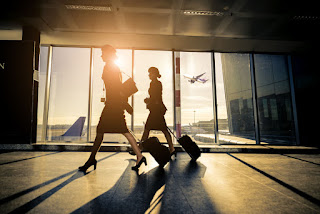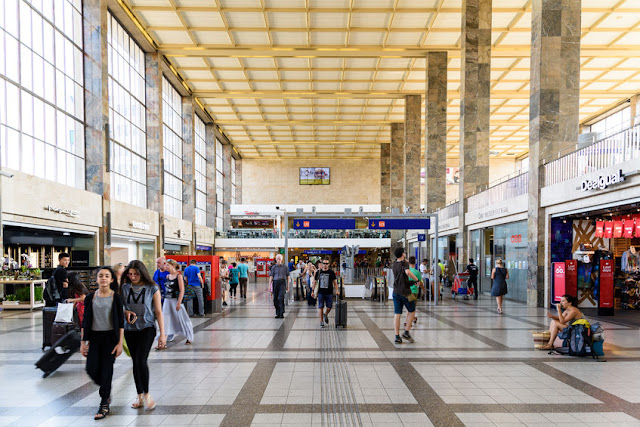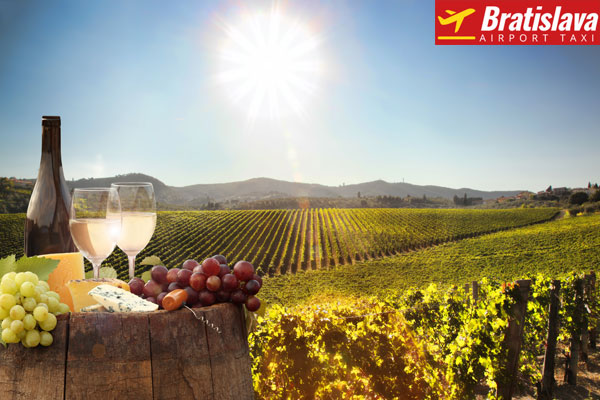Es sind fast 70 Jahre her, als der Baustart für die Landebahnen 04 - 22 und 13 - 31 im Flughafen Bratislava begann. Seit dem Bestehen des Flughafens bedeutet das eine ständige Bewegung nicht nur in der Luft, sondern auch auf dem Boden. Flughafen, welcher nur 9 km nordöstlich vom Zentrum Bratislavas entfernt ist, reagiert ständig auf steigende Ansprüche der Passagiere. Unverkennbar ist auch der technologische Fortschritt.
Erste regelmäßige Fluglinien
Die ersten regelmäßigen Flüge vom Flughafen Bratislava begannen im Jahr 1951. In der nächsten Aufbauphase wurde ein neuer Abflugterminal mit einem neuen Verkehrssystem eingeleitet. Die Hallen für die Abfertigung der Passagiere wurden erweitert. Ebenso entstanden die neuen Räume für die Staffel des Innenministeriums. Durch die komplexe Rekonstruktion des Bahnsystems in 80. Jahren des vorigen Jahrhunderts wurden die Landebahnen deutlich verlängert. In 90 Jahren wurde das Terminal für die Ankünfte vollendet, das Feuerwehrhaus wurde gebaut, der neue Kontrollturm wurde in Betrieb genommen, die Lager für Treibstoff wurden erweitert und das Licht- und Sicherungssystem der Aufstiegs- und Landebahn 13 - 31 wurde umgebaut. Die Kategorie des Flughafens wurde von 6 auf 7 erhöht und damit auch für Großflugzeuge geöffnet.
Neues Millenium
Der Beginn des neuen Milleniums hat für den größten Flughafen in der Slowakei Änderungen gebracht. Er hat sich in eine Aktiengesellschaft umfirmiert: „Letisko M. R. Štefánika – Airport Bratislava AG“, (BTS). Die Änderungen hängen auch mit dem Beitritt der Slowakei zum Schengen-Raum zusammen. In Bezug auf die Sicherheit wurde ein Phytosanitärzentum zur Kontrolle der belebten und unbelebten Ware gebaut. So verbesserte sich auch die Sicherheitskontrolle. Für die Passagiere aus den Schengenstaaten wurde ein Anbau des Terminals C realisiert. Alle notwendigen Maßnahmen, welche mit dem Beitritt der Slowakei in die Europäische Union zusammenhängen, wurden auf dem Flughafen im Jahr 2008 erfolgreich vollendet.
Neuer Flughafenterminal
Das weitere anspruchsvolle Projekt des Flughafens Bratislava war der Bau des neuen Terminals. Die Durchführung dieses Projektes wurde während des vollen Flughafenbetriebes in den Jahren 2009 bis 2012 realisiert. Es umfasste einen schrittweisen Abriss des alten Terminals und zugleich den Aufbau des neuen. Im Jahr 2016 wurde mit der Leitung des Flughafens Bratislava über die Rekonstruktion des Terminals B für VIP Passagiere entschieden.
Die guten wirtschaftlichen Ergebnisse und die Zufriedenheit der Passagiere
Im Jahr 2015 gewann der Bratislaver Flughafen das Solvenzzertifikat, welches von der Firma „Bisnode Slowakei“ erteilt wurde. Dazu sollte der Flughafen 1500 Kriterien und 5 Grundbedingungen erfüllen. Voriges Jahr hatten ein solches Zertifikat nur 7,8% der slowakischen Firmen verliehen bekommen. Nach einer Umfrage der Gesellschaft „The World Airport Awards“, über die Zufriedenheit der Flughafenbesucher, ist der Flughafen Bratislava als der siebtbeste Flughafen in Osteuropa bewertet worden.
Steigende Zahl der Passagiere
Im Jahr 2015 wurden mehr als 1,5 Millionen Passagiere abgefertigt. Damit ist es eine Steigung um 15,4% mehr als im Jahr 2014. Von Januar bis Mai des Jahres 2016 waren es 31% Passagiere mehr als in derselben Zeit des vorigen Jahres. Der Flughafen „M. R. Štefánik“ bietet regelmäßigen Fluglinien nach 30 Reisezielen in 15 Ländern und Dutzende Flüge zu Ferienorten. Dank der erhöhten Zahl der Passagiere, erhöht sich auch die Nachfrage nach Taxi-Dienstleistungen. Es freut uns, dass wir diese Dienstleistungen für den Transfer in die Stadt Bratislava als auch für Transfer von Bratislava nach Wien mit einem luxuriösen Fahrzeug anbieten können.











